September 5, 2024 · 11 min read
How C-Level Project Oversight Can Drive Project Success
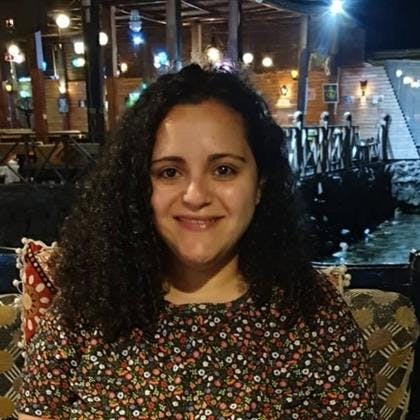
Shaimaa Badawi
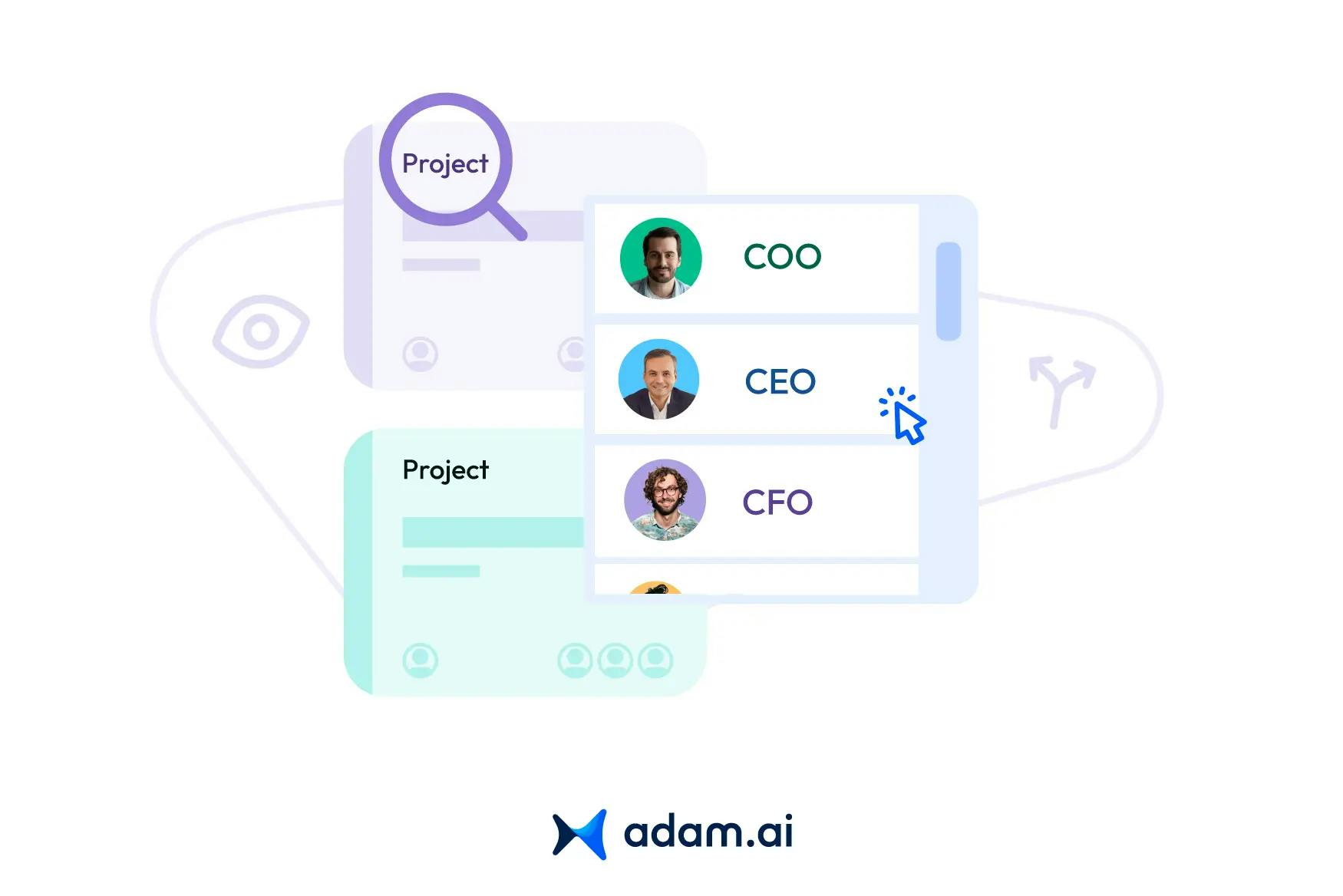
Effective C-level project oversight is the cornerstone of successful enterprise project management. At the executive level, ensuring projects align with business objectives, managing risks, and maintaining transparency are critical responsibilities that can make or break organizational success. In this article, we dive deep into how C-level executives play a pivotal role in guiding projects from conception to completion, the key challenges they face, and the strategic importance of their oversight.
What is c-level project oversight?
C-level project oversight refers to the active role that senior executives, such as CEOs, CFOs, COOs, and other C-suite leaders, play in overseeing and guiding large-scale projects to ensure alignment with the organization’s strategic goals. This form of oversight is not limited to daily project management tasks but focuses on high-level decision-making, resource allocation, risk management, and strategic direction.
Unlike traditional project management, which is primarily handled by project managers, C-level project oversight involves top-level sponsorship and governance. Executives ensure that the project remains on track by removing roadblocks, providing strategic guidance, and performing periodic reviews. This oversight helps maintain project efficiency and ensures that the project delivers the expected value to the organization.
Why is C-level project oversight important?
C-level project oversight is essential because it ensures that projects not only meet their specific objectives but also align with the company’s overall strategic goals. Here's why it's crucial:
Strategic alignment
One of the most critical roles of C-level oversight is ensuring that projects are aligned with the company’s long-term vision and strategic objectives. By overseeing projects at a high level, C-suite executives guarantee that the resources and efforts put into projects contribute to broader business goals, avoiding misalignment and wasted efforts on initiatives that do not drive real value.
Resource optimization
C-level executives manage the distribution of the organization’s most valuable resources: money, time, personnel, and technology. Their oversight ensures that these resources are efficiently allocated across projects. Without this top-level management, there is a risk of overcommitting resources to lower-priority initiatives while critical projects suffer from a lack of funding or staffing.
Risk management
Large-scale projects inherently come with significant risks, including financial, operational, and reputational risks. C-level executives, with their broad organizational view, are better positioned to identify and manage these risks proactively. By engaging in oversight, they ensure that risk mitigation strategies are in place and that potential threats to project success are addressed early.
Accountability and decision-making
C-suite oversight provides an additional layer of accountability to project teams. With executive-level involvement, project managers and teams are held to higher standards, knowing that their progress is being monitored at the highest levels of the organization. This level of accountability drives better performance and decision-making, ensuring that projects stay on track and meet their deliverables.
Performance monitoring and adjustments
C-level executives monitor project performance through key performance indicators (KPIs) and regular reviews. This oversight allows for timely interventions when projects deviate from the planned trajectory, enabling quick course corrections to ensure the project continues to contribute to the company’s goals. Without such high-level monitoring, small issues can grow into major roadblocks that derail entire projects.
Improved stakeholder confidence
Stakeholders, whether they are board members, investors, or clients, have greater confidence in projects that are overseen by C-level executives. Their involvement signals that the project is strategically important to the company and that it is being managed with careful oversight. This can increase stakeholder buy-in and support, which is vital for the project’s success.
How do c-level executives ensure projects align with business goals?
C-level executives ensure projects align with business goals by focusing on several key areas: strategic vision, resource allocation, communication, and performance monitoring. Here's how they accomplish this:
1. Setting the strategic vision
C-level executives are responsible for clearly defining the company's strategic goals and vision. They ensure that each project aligns with these objectives, whether it's increasing market share, improving operational efficiency, or fostering innovation. By communicating this vision to project managers, executives provide a roadmap that guides project priorities and decision-making.
2. Project selection and prioritization
Executives play a critical role in selecting and prioritizing projects that contribute to long-term business goals. They evaluate project proposals based on their alignment with the company’s strategy, potential ROI, and risk factors. By focusing on high-value projects, they ensure that the organization’s efforts and resources are directed toward initiatives that will drive business growth and competitive advantage.
3. Resource allocation
Adequate resource allocation is essential for project success. C-level executives ensure that projects are properly resourced by coordinating across departments and ensuring that budget, personnel, and technology needs are met. They also ensure that critical resources are distributed in a way that aligns with business goals, maximizing the organization’s capabilities.
4. Clear communication of business objectives
Communication is key to aligning projects with business goals. C-level executives clearly communicate the broader business objectives to project teams, helping them understand how their work contributes to the organization’s overall strategy. This clear connection between daily tasks and long-term goals motivates teams and ensures that efforts remain focused on the bigger picture.
5. Monitoring performance and strategic alignment
C-suite leaders continuously monitor project performance, ensuring that projects remain aligned with business objectives. They establish key performance indicators (KPIs) and regularly review progress reports to identify any deviations from the plan. By intervening early when misalignments occur, executives help projects stay on track and meet the company’s strategic targets.
6. Managing risk and course correction
Effective risk management is another tool C-level executives use to ensure alignment. They oversee risk assessments, approve contingency plans, and ensure that risks are addressed promptly to prevent disruptions to business goals. If a project is veering off course, they work with project managers to implement corrective actions and realign the project with the company’s strategic objectives.
What role does risk management play in c-level project oversight?
Risk management plays a critical role in C-level project oversight by providing the tools and processes needed to identify, evaluate, and mitigate potential risks that could jeopardize the success of a project. Here's how it fits into C-level oversight:
1. Identifying high-level risks
C-level executives have a broad view of the organization, enabling them to identify risks that project managers or lower-level teams may overlook. These risks could be related to market shifts, regulatory changes, financial constraints, or technological disruptions. By recognizing these risks early, executives can steer projects in the right direction, avoiding costly setbacks.
2. Strategic risk mitigation
Risk management at the C-suite level involves more than just identifying risks; it includes developing strategies to mitigate them. C-level executives are responsible for ensuring that appropriate risk mitigation plans are in place. This could involve allocating additional resources, adjusting timelines, or even halting projects that are no longer viable. Their oversight ensures that risks are addressed in a way that aligns with the company’s overall strategic objectives.
3. Balancing risk and opportunity
Executives must weigh the risks of a project against its potential rewards. Some high-risk projects offer significant strategic advantages but require careful management to ensure their success. C-level leaders use risk management to make informed decisions about which projects to pursue, understanding that taking calculated risks can lead to substantial rewards when managed properly.
4. Ensuring compliance and governance
Risk management also involves ensuring that projects comply with legal, regulatory, and internal governance standards. C-level executives are responsible for overseeing that all projects adhere to compliance requirements to avoid legal or financial penalties. This is particularly important in industries like finance, healthcare, or technology, where non-compliance can have severe consequences.
5. Risk communication and reporting
C-suite executives are responsible for ensuring that risk is communicated effectively throughout the organization. They oversee the development of comprehensive risk reports and ensure that these are regularly reviewed at key intervals. Through structured communication, they ensure that all stakeholders are aware of the risks involved and how they are being managed, fostering transparency and accountability.
6. Contingency planning
Risk management involves preparing for worst-case scenarios. C-level executives play a crucial role in ensuring that contingency plans are in place for high-impact risks. This could involve creating alternative plans for resource allocation, project timelines, or even shifting the project’s direction entirely. By ensuring these contingency plans are ready, C-suite leaders can safeguard the organization from potential disruptions.
7. Decision-making and risk tolerance
C-level executives define the organization’s risk tolerance: the level of risk the company is willing to take on to achieve its goals. Risk management helps them make informed decisions about whether a project aligns with this risk appetite. If a project’s risks exceed the company’s tolerance, executives may decide to cancel it or redirect resources to lower-risk initiatives. Conversely, projects with manageable risks may be fast-tracked for approval.
8. Protecting reputation and stakeholder confidence
Poor risk management can lead to project failures that damage an organization’s reputation and erode stakeholder confidence. C-level executives, through their risk oversight, play a vital role in safeguarding the company’s brand and ensuring that key stakeholders, such as investors, clients, and regulators, maintain trust in the organization’s ability to deliver successful projects.
What are the key challenges of c-level project oversight?
C-level project oversight comes with several unique challenges, as executives balance high-level strategy with the practical realities of managing large, complex projects. Here are the top 5 challenges they face in project oversight:
1. Balancing strategic vision with operational details
C-level executives often struggle to find the right balance between maintaining a high-level strategic vision and staying informed about operational details. While focusing on long-term goals, they risk missing out on critical issues affecting project progress if they don't have a clear line of sight into day-to-day operations.
2. Ensuring alignment with business strategy
One of the most crucial aspects of C-level oversight is ensuring that all projects align with evolving business strategies. As market conditions, technologies, and regulations shift, keeping projects in sync with changing strategic objectives becomes a constant challenge.
3. Resource allocation and prioritization
Managing resources effectively across multiple projects is a significant challenge. C-level executives need to prioritize which initiatives get funding, talent, and time without neglecting other important projects. Misallocation can lead to project delays or failure.
4. Managing communication gaps
The gap between C-level executives and project managers can lead to communication breakdowns. Executives must ensure that project goals and strategic priorities are clearly communicated, and that there’s a consistent flow of information between all stakeholders to avoid misaligned objectives.
5. Managing risk across complex portfolios
Executives face the challenge of identifying and mitigating risks not just within individual projects, but also across interconnected project portfolios. Overlooking cumulative risks can jeopardize the success of multiple projects simultaneously, making proactive risk management essential.
How can c-level executives improve project transparency?
C-level executives can enhance project transparency by implementing several key strategies that promote visibility and open communication across all levels of an organization. Here’s how they can improve project transparency:
1. Establish clear communication channels
Creating consistent, open lines of communication is critical for ensuring that stakeholders at all levels are kept informed. C-level executives should encourage regular project updates through meetings, dashboards, and reports, ensuring that key information flows smoothly between teams and leadership.
2. Implement real-time reporting tools
Leveraging project management software that offers real-time reporting can significantly improve transparency. By using dashboards that track project progress, resource allocation, and financial health, executives can gain instant access to critical data, allowing them to monitor the status of each project easily.
3. Foster a culture of accountability
Encouraging accountability at every level of the project team helps to promote transparency. By clearly defining roles, responsibilities, and expectations, C-level executives can ensure that team members are held accountable for their tasks and milestones, leading to more honest reporting and fewer surprises.
4. Standardize project documentation
By standardizing project documentation and processes, C-level executives can ensure that every project follows a similar structure, making it easier to track performance and compliance. Standardized templates for meeting minutes, project plans, and reports help provide a clear audit trail and ensure consistency.
5. Encourage open dialogue between teams
Creating opportunities for cross-functional teams to collaborate and share insights helps to improve project transparency. Regular cross-departmental meetings or workshops can ensure that everyone understands the project goals, challenges, and successes, which fosters a more unified approach to project execution.
6. Ensure regular stakeholder engagement
Regularly engaging with stakeholders, both internal and external, ensures that key project metrics and outcomes are shared and discussed openly. This transparency in reporting not only builds trust but also allows executives to make informed decisions with a full understanding of stakeholder expectations and project progress.
Streamline executive-level meetings with adam.ai
Managing high-level project oversight requires seamless coordination, clear communication, and robust tracking. adam.ai is an intuitive meeting management platform designed to enhance governance, transparency, and decision-making for C-level executives overseeing large-scale projects.
- Agenda and content management: Efficiently organize and manage agendas for executive meetings, ensuring that all strategic documents, project reports, and decision-making materials are available to stakeholders. With centralized access, executives can stay informed and maintain focus on key project objectives.

- Action tracking and accountability: Keep projects on course with adam.ai’s action and decision-tracking features. Assign tasks, monitor progress, and ensure that project milestones are achieved while holding teams accountable for their responsibilities.

- Multi-space management: Organize different project phases, stakeholder meetings, and strategic reviews in dedicated spaces. This multi-space feature ensures clear, structured oversight across multiple projects, helping executives track progress and manage complex portfolios seamlessly.
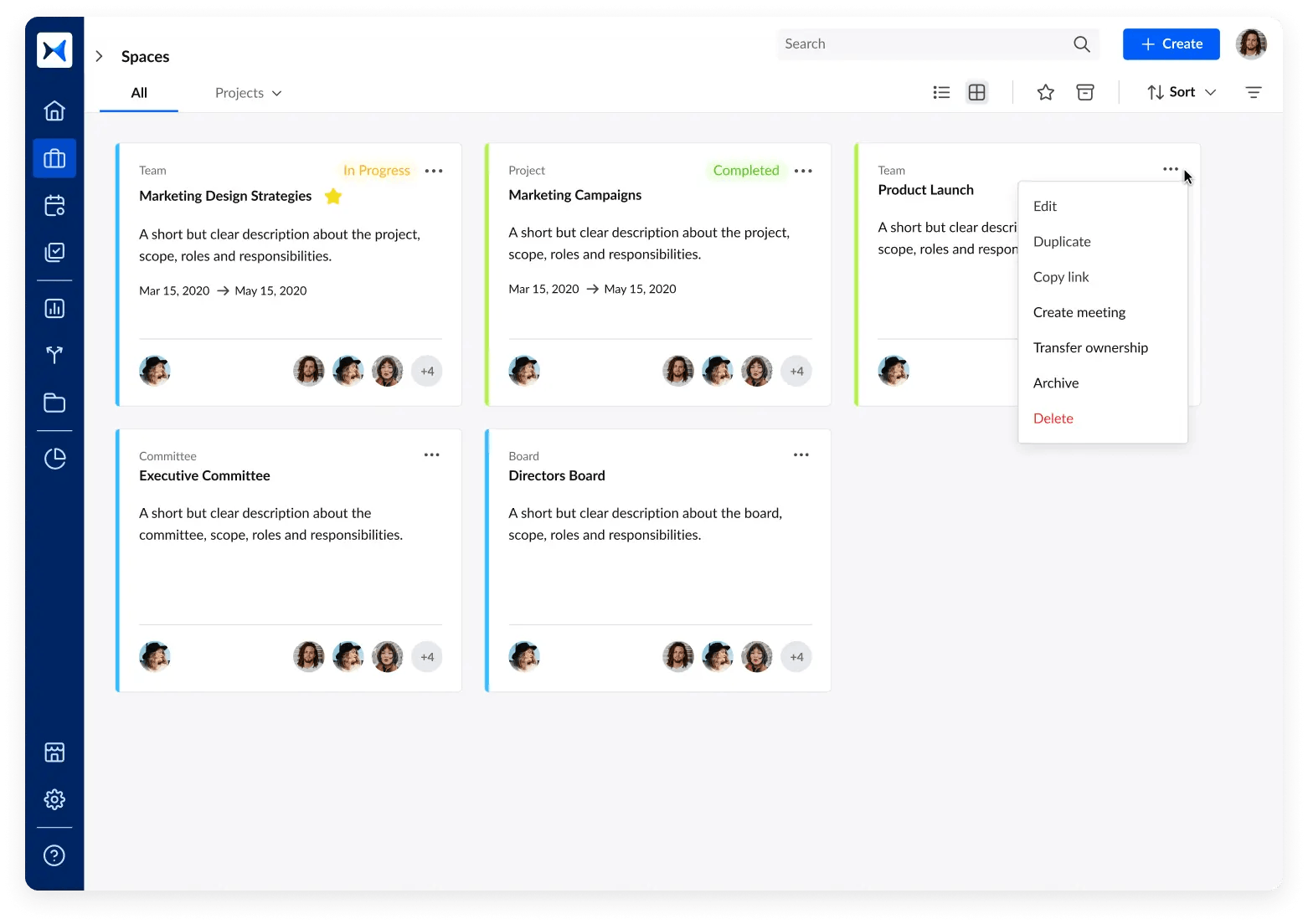
- Automated meeting minutes and documentation: Simplify the documentation process with automated meeting minutes. Capture all key discussions, decisions, and action points during project oversight meetings, ensuring that nothing falls through the cracks and all stakeholders are aligned.
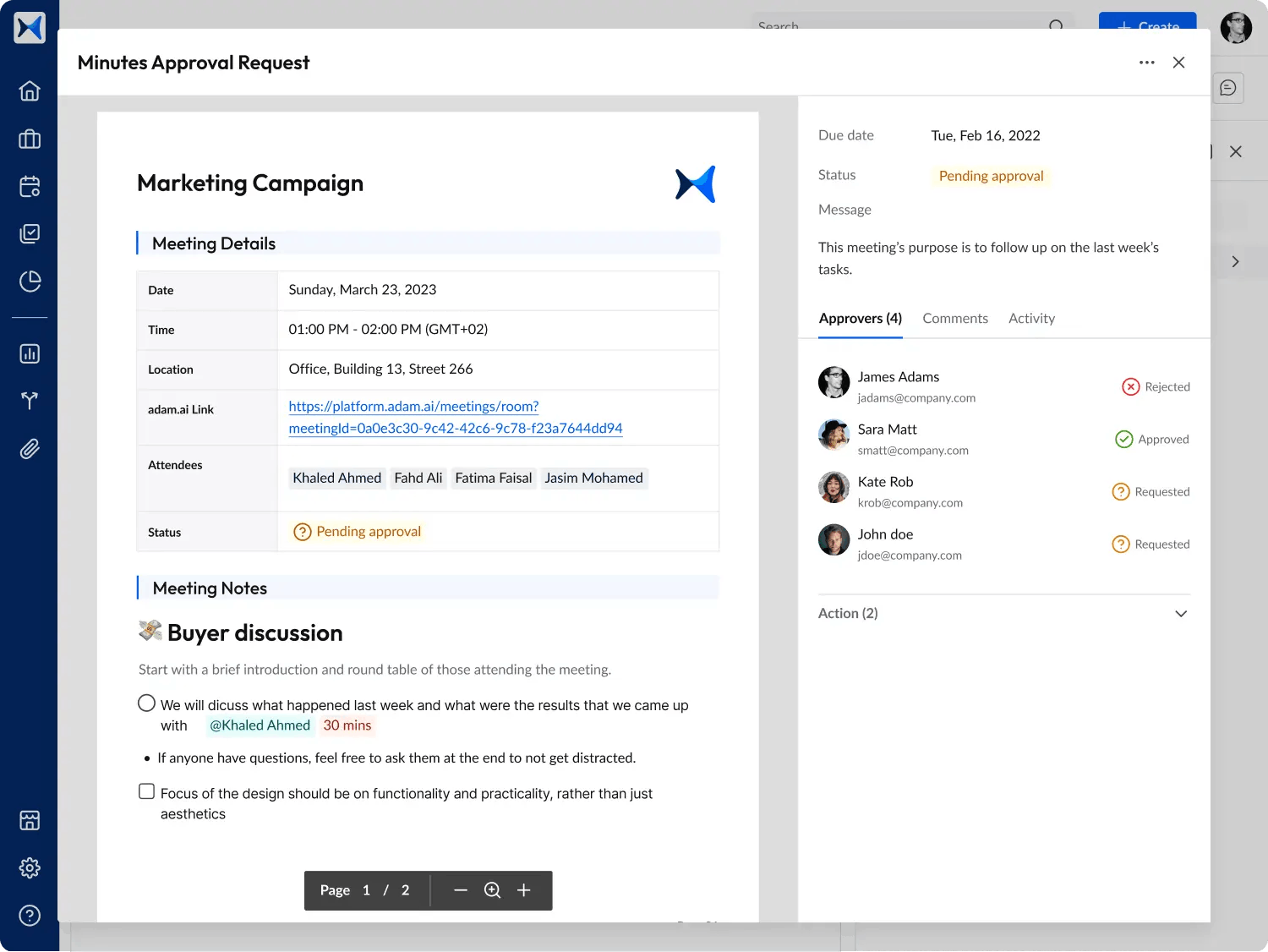
- Voting and decision management: Facilitate decision-making processes by utilizing built-in polling and voting tools. Track executive approvals, ensuring that critical project decisions are made with transparency and clarity, supporting project governance.
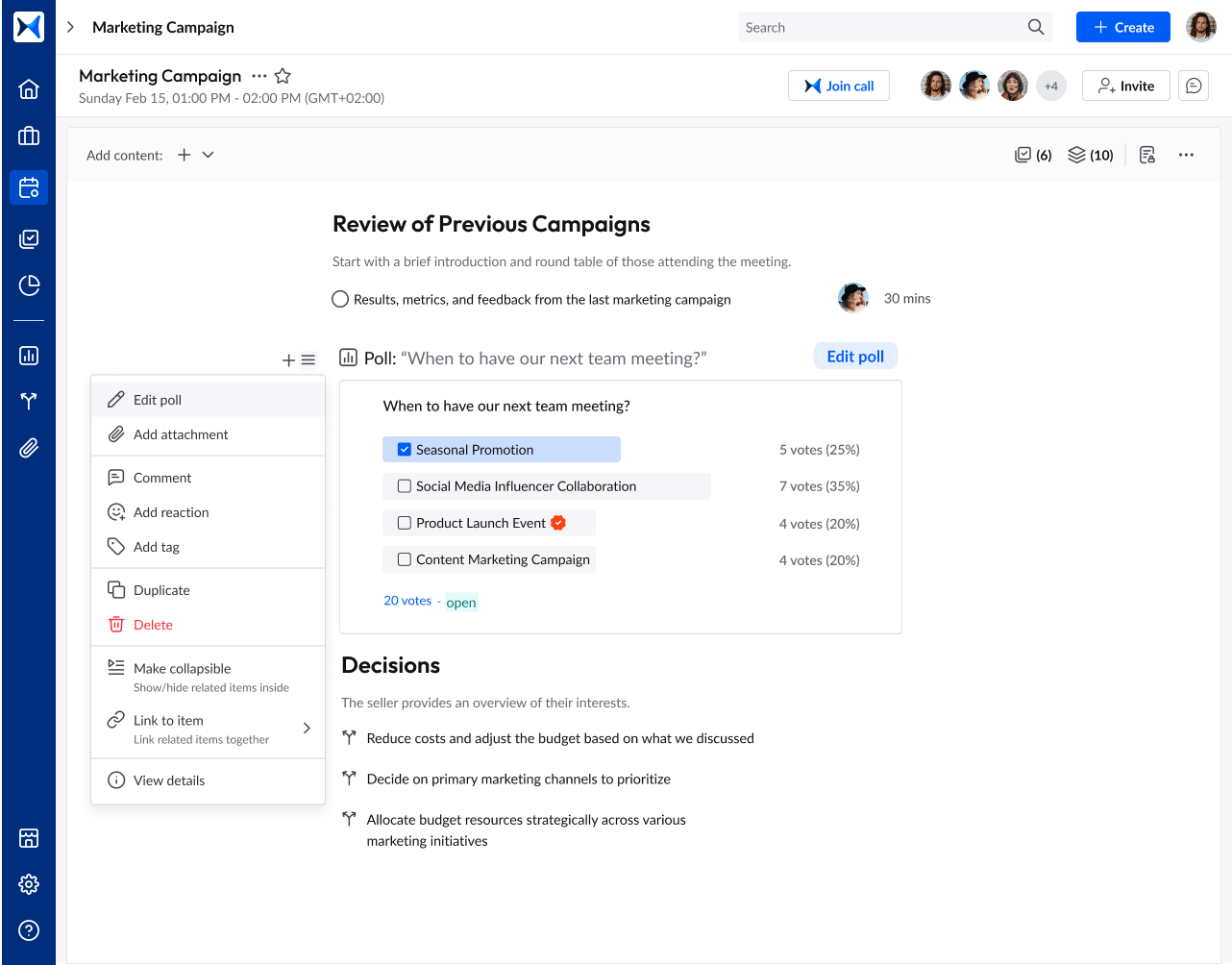
- Analytics dashboard for strategic insights: Gain valuable insights into project performance with adam.ai’s analytics dashboard. Monitor meeting participation, track project progress, and evaluate key performance indicators (KPIs) to make data-driven decisions that align with overall business goals.
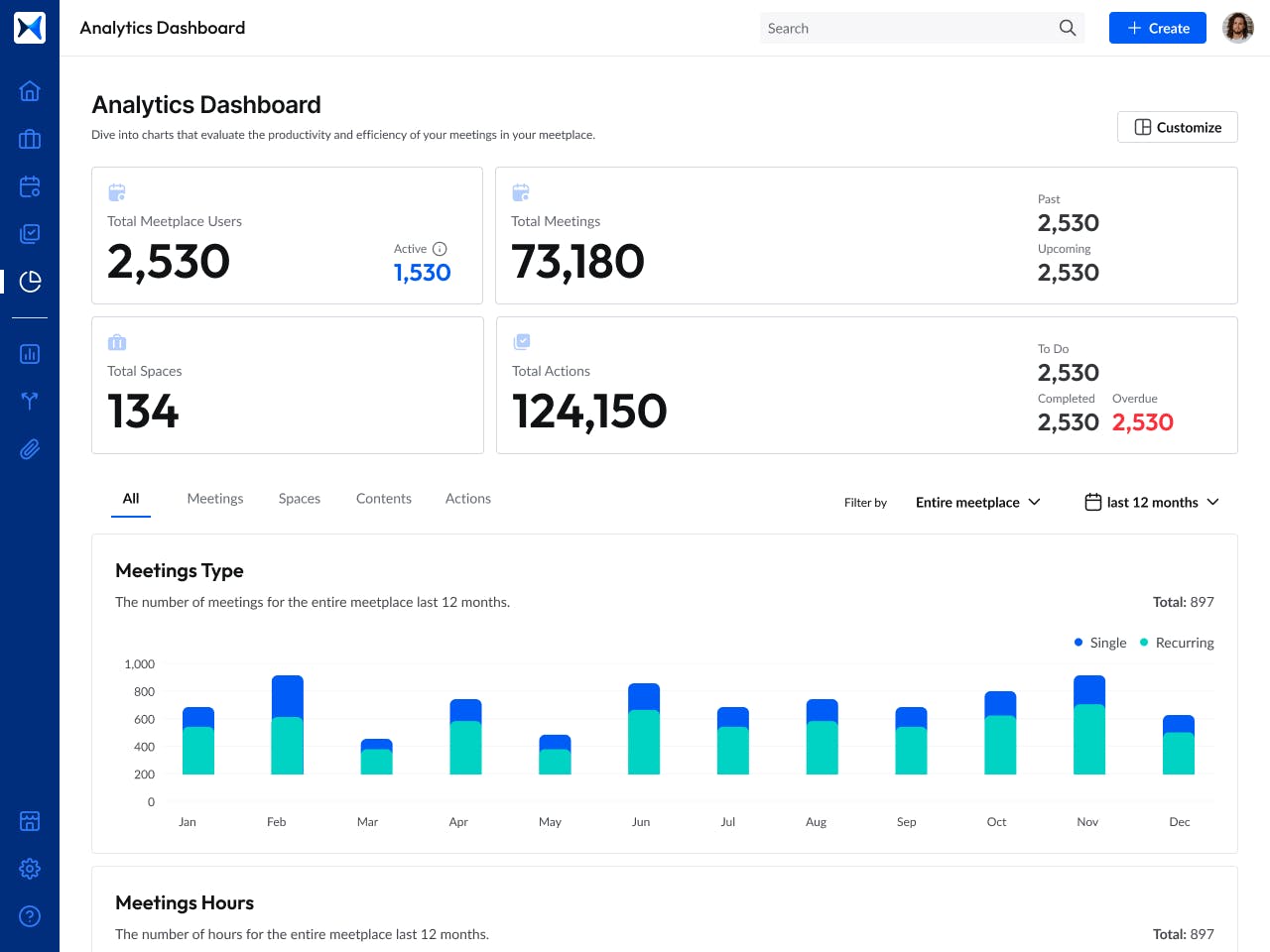
Transform how you conduct critical meetings—From meticulous preparation to effective execution and insightful follow-up, adam.ai integrates comprehensive analytics, full customization, and intuitive interfaces with powerful meeting management tools.
Easy onboarding. Enterprise-grade security. 24/7 dedicated support.
The bottom line
C-level project oversight is essential for ensuring that projects align with strategic business goals, are executed efficiently, and deliver the expected outcomes. Leveraging modern tools like meeting management platforms can help streamline oversight, enhance decision-making, and provide the transparency needed to keep projects on track.
And while there may be multiple solutions available, here is why adam.ai is the meeting management software platform you can trust:
- adam.ai is one of Atlassian Ventures' portfolio companies.
- In the meeting management software category on G2, adam.ai has been ranked a leader and a high performer for successive quarters in the past years.
- adam.ai has been included in the Forrester Report in the AI-enabled meeting technology landscape.
- adam.ai is trusted and used by powerful teams and organizations worldwide for all types of critical meetings, like board, committee, project management, and business development meetings.
- And most importantly, adam.ai integrates with your existing workflow, is SOC2 compliant, provides dedicated support and success, and has a free trial option.
Subscribe to adam.ai blog
Stay ahead with the latest insights—get our newest blog posts, tips, and updates sent straight to your inbox.